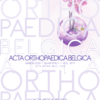The partial femoral condyle focal resurfacing (HemiCAP-UniCAP) for treatment of full-thickness cartilage defects, systematic review and meta-analysis
knee focal metallic implant ; HemiCAP ; UniCAP ; Wave prosthesis ; inlay design
Published online: Jun 15 2021
Abstract
Knee osteochondral defects are a common problem among people, especially young and active patients. So effective joint preserving surgeries is essential to prevent or even delay the onset of osteoarthritis for these group of patients. This study aims to critically appraise and evaluate the evidence for the results and effectiveness of femoral condyle resurfacing (HemiCAP/ UniCAP) in treatment of patients with focal femoral condyle cartilage defect.
Using the search terms : HemiCAP, UniCAP, Episurf, focal, femoral, condyle, inlay and resur-facing, we reviewed the PubMed and EMBASE and the Cochrane Database of Systematic Reviews (CDSR) to find any articles published up to March 2020.
The short term follow-up of the HemiCAP shows (6.74 %) revision rate. However, 29.13 % loss of follow up let us consider these results with caution especially if the revision rate progressively increased with time to 19.3 % in 5-7 years with no enough evidence for the long term results except the data from the Australian Joint Registry 2018, where the cumulative revision rate was 40.6 % (33.5, 48.4) at ten years. The UniCAP that used for defect more than 4 cm 2 has a high revision rate (53.66 %) which is considered unacceptable revision rate in com-parison to another similar prosthesis such as Uni-Knee Arthroplasty (UKA).
The evidence from published studies and our meta- analysis suggests that partial resurfacing of the femoral condyle (HemiCAP) doesn’t support its usage as a tool to treat the focal cartilage defect in middle- aged patients.
The UniCAP as femoral condyle resurfacing has very high revision rate at 5-7 years (53.66 %) which make us recommend against its usage.
